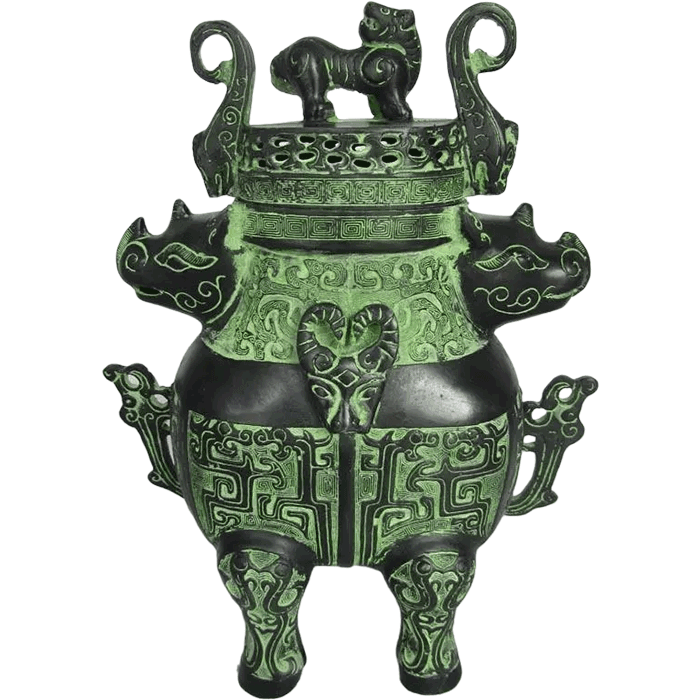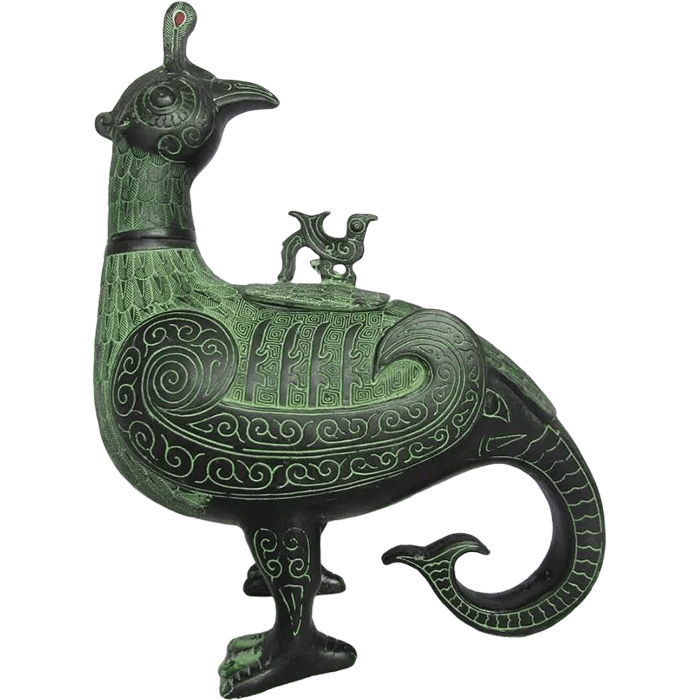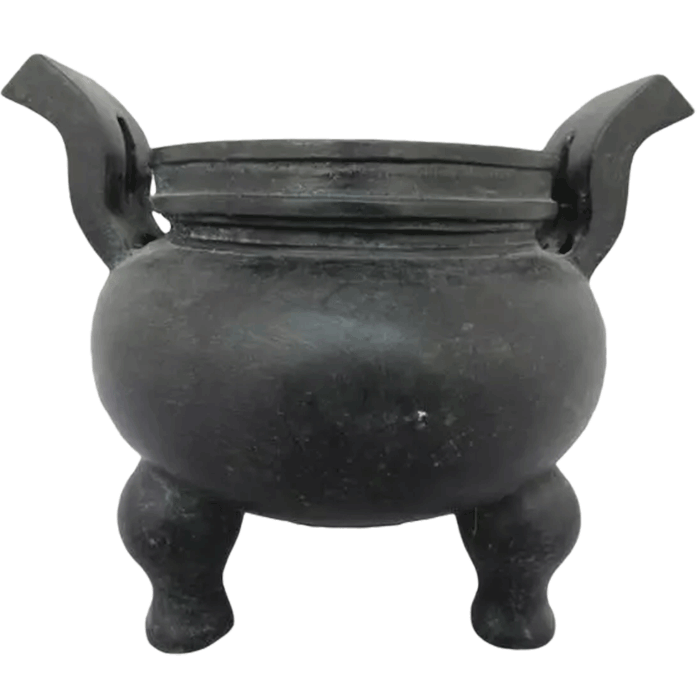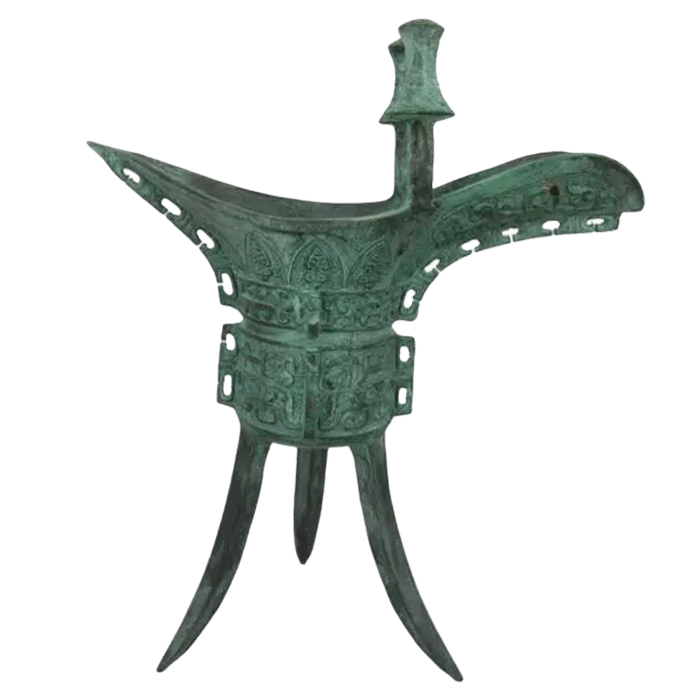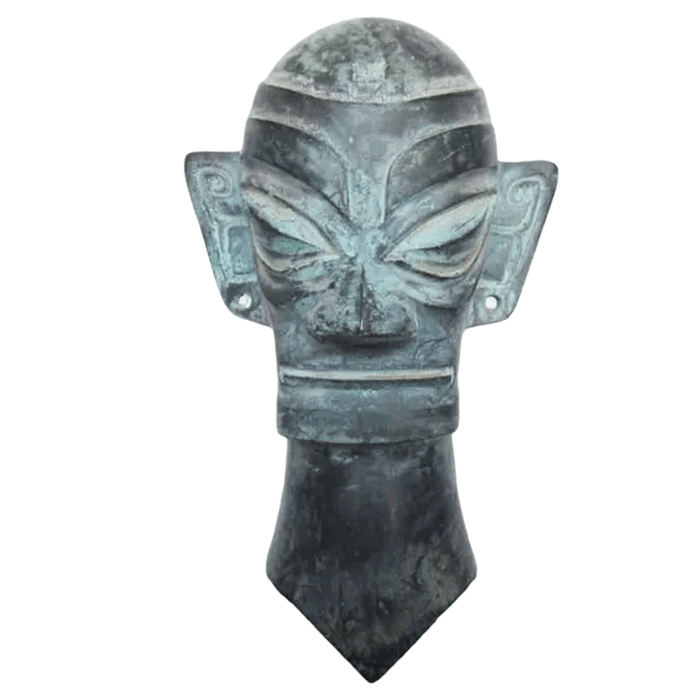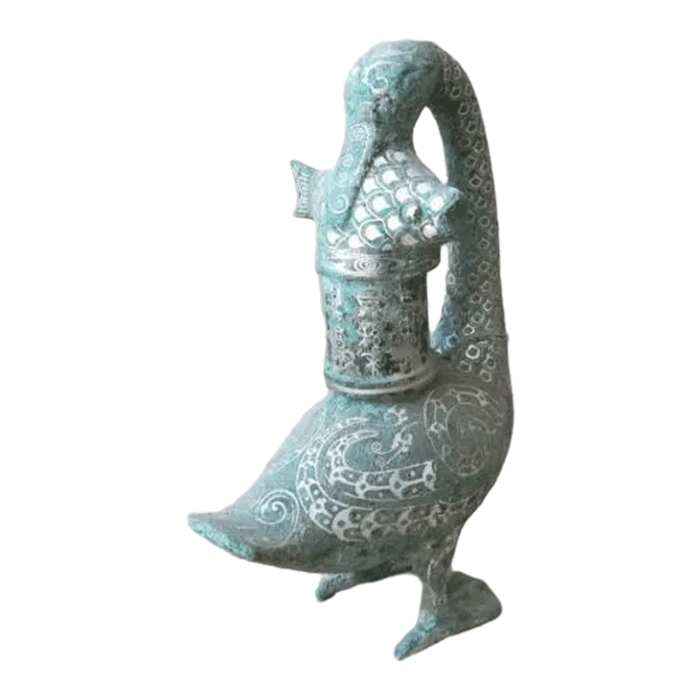Introduction to Chinese Bronze Wares
What is Chinese bronzes?
Chinese Bronzes is the representative of China's culture and technology in the Xia, Shang and Zhou dynasties. It has a special social status and is the product of a strict hierarchy.
History of Chinese Bronze
Chinese bronze wares first appeared in 5,000 BC, and were gradually replaced by iron wares in the Han Dynasty. The Bronze Age spanned a long history of about 3,000 years.
Features of Chinese Bronze
Chinese bronze wares appeared in prehistoric times and flourished in the Xia, Shang and Zhou dynasties. Not only are there various types of utensils, but they also have solemn and gorgeous shapes and exquisite and beautiful decorations, which are rare in the world, and the inscriptions are rich in content, which has very important historical value and is also a precious material for studying the development and evolution of writing. In terms of usage, bronze wares can be divided into several categories such as containers, weapons, musical instruments, and chariots and horses. This article mainly introduces the types and names of some bronze vessels.
Types of Chinese Bronze
01
tripod
Ding is an ancient utensil for cooking food.
Ding is not only used for cooking food, but also a ritual vessel used for sacrifices in ancestral temples.
02
lì
Li, as a kind of cooker used for cooking in ancient China, is pronounced as lì. Pottery Li appeared in the late Neolithic Age, and pottery Li and bronze Ge coexisted in the Shang and Zhou dynasties.
Its shape is generally extravagant (outwardly inclined mouth), with three hollow feet, which is convenient for cooking and heating.
03
yǎn
Equivalent to the current steamer. There are two types of round tripods and square quadrupeds. The whole vessel is divided into two parts, upper and lower. The upper part is Zeng (zeng, sound gift), which is used to place food; the lower part is Li, which holds water. For example, the steamer and the ge are cast as a whole, which is called a combined zi, and there is a copper piece in the middle, which is called 箄 (bi, sound ratio). There are cross holes or linear holes that can pass through steam.
04
dagger
Equivalent to today's spoons and spoons, it is an utensil for picking up food in ancient times.
From the body, it can be divided into pointed body dagger and ellipsoid dagger, and from the handle, it can be divided into crank dagger and straight handle dagger.
05
guǐ
It is equivalent to the current bowl, which is used to hold rice. Generally, it has a round belly, extravagant mouth, and ring feet.
06
fǔ
It has the same function as the gui, and it is also used to hold food. Rectangular, with a wide mouth, four short legs, the lid and the container are the same as the elephant, closed to form one container, and opened to form two identical containers.
07
xǔ
Used to hold millet, millet, rice, and beam. Oval, closed mouth, with ears on the ventral side, ring feet, and a cover with four rectangular buttons or ring feet.
08
duì
Dun (dui, sound pair) is used for Sheng millet, millet, rice, and Liang. Evolved from the tripod, its shape resembles a watermelon, also known as Watermelon Dun or Watermelon Ding. Its upper, lower, and inner sides are round, and the cover and body form a sphere or oval, with two ring ears and three short legs. The cover can also be used in reverse.
09
bean
In ancient times, it was a meat-eating vessel, and it was also a zu hai (zu hai, Yin Zuhai) vessel. Shu is today's pickles, and 醢 is today's meat sauce. The top of the bean is a pan belly, which is shallow in the early stage and becomes darker after the spring and autumn. The bottom has a long stalk and ring feet, and some have covers.
10
yǒu
One of the containers for wine. The basic shape is an ellipsoid, with a deep abdomen and a bulging lower part, and a ring foot. There is a cover on the top and a button on the cover. It is shaped like a pot but has a handle.
11
respect
The basic shape of the wine container is mostly an extravagant mouth, a bulging belly, a round bottom, and a ring foot. It looks like a goblet, but the middle part is fatter than a gou, and the mouth is also larger than a gou. Generally known as the Zun, it is divided into three categories: Goblet Zun, Shouldered Big Mouth Zun, and Bird and Beast Zun.
12
gōng
Si Gong is an ancient vessel for holding or drinking wine. "兕" is an ancient rhinoceros. Its horns were used to make toasts in the past. Because it was not easy to preserve, copper was used to make toasts during the Yin and Shang Dynasties. The body of the Gong is oval or square, with ring feet or quadrupeds underneath, a wide flow in the front, and a hand (pan, sound judgment, meaning handle) in the back. Gai is mostly in the shape of an animal head or a proboscis elephant head.
13
hé
Equivalent to today's teapot, it is an ancient vessel for blending wine, water and warming wine. "Shuowen·Sanbu": "盉, seasoning also", so this vessel can adjust the concentration of wine flavor by adding different amounts of water. Generally, it has a closed mouth, a deep abdomen, a cover, a tubular flow in the front, a stalk in the back, and three or four legs underneath.
14
pot
A vessel with a long neck for wine or water. "Poetry Daya Han Yi" has a saying: "Hundred pots of sake", and "Mencius King Hui of Liang" has a saying: "Eating pots of pulp to welcome the king's teacher". The shape of the pot is various, including round, square, flat, gourd-shaped, ear-shaped and garlic-shaped.
15
léi
It is an ancient wine making vessel and a large wine container. There are generally two types of shapes: round and square. It is characterized by an open mouth, short neck, wide shoulders, two ears on the shoulders, a ring nose on the front and lower abdomen, and a rope for picking up wine, and a ring foot.
16
Jazz
The general name of the ancient drinking vessel, which is equivalent to the current wine cup, is one of the earliest bronze sharp tools that appeared in ancient China. The basic shape is a round belly, with a tile-like flow in the front for pouring wine, a pointed tail in the back, a scorpion on the ventral side, two pillars on the mouth, and three-pointed feet under the abdomen.
17
goblet
The earliest bronze drinking vessel. The top and bottom are bell-shaped, and the middle is long neck and thin waist.
18
horn
drinker. The shape is like a jue, with no flow and no pillars, the mouth and two wings are like tails, some have covers, the bottom is nearly semicircular, and three tapered feet.
19
zhì
drinker. The shape is similar to the Zun, but the capacity is smaller than the Zun, and the abdomen is drooping, the mouth is wide, and the feet are ringed. Most of them have covers.
20
Spoon
Also known as 枓, it is a wine container. It is generally in the shape of a short cylinder, with a short handle next to it, and the handle may be hollow to secure the wooden handle.
twenty one
plate
The utensils used to hold water and accept discarded water when the ancients washed. The shape is round, with a large mouth, ring feet, shallow and flat abdomen, some have ears, and some have flow.
twenty two
yí
The watering device and the plate are a set of utensils for washing in ancient times. The shape is elliptical like a ladle, with a stream in the front to pour water into, and a handle in the back to hold it. The bottom has three or four legs or no legs, and some have covers.
twenty three
Fǒu
The basic feature of a water or wine container is a round belly with a cover, two or four rings of earrings on the belly, and a square pot.
Supplier of Chinese Bronze
Sculpmart is a professional bronze art and bronze wares manufacturer providing Chinese Bronze Handcraft arts which will allow you to have a chance to own a masterpiece of Chinese bronze sculptures. If you like, you may choose the style to customize, send us the image and design, our craftsman will reproduce and cast a perfect bronze ware for you.


